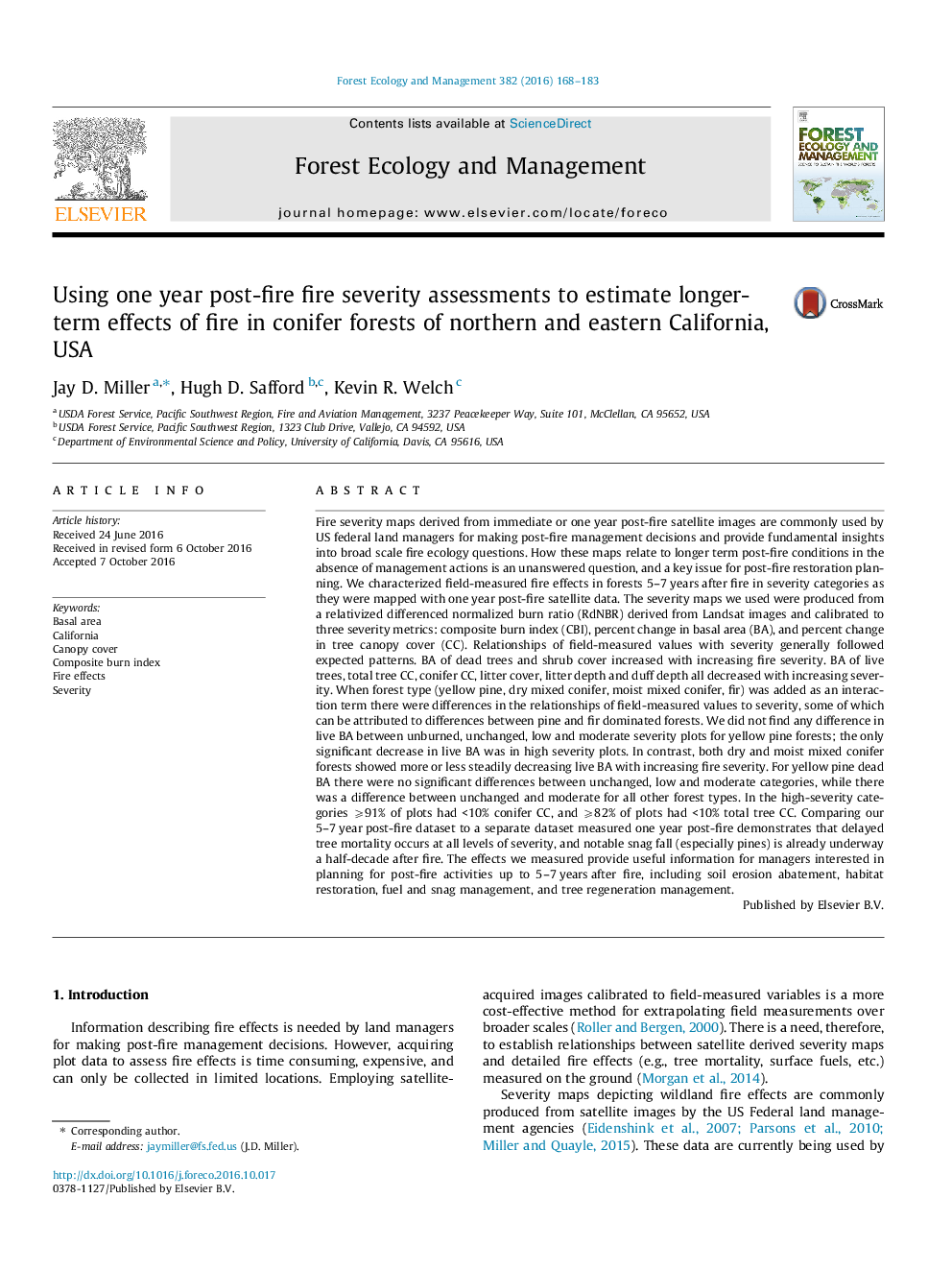| کد مقاله | کد نشریه | سال انتشار | مقاله انگلیسی | نسخه تمام متن |
|---|---|---|---|---|
| 4759704 | 1421376 | 2016 | 16 صفحه PDF | دانلود رایگان |
عنوان انگلیسی مقاله ISI
Using one year post-fire fire severity assessments to estimate longer-term effects of fire in conifer forests of northern and eastern California, USA
ترجمه فارسی عنوان
با استفاده از یک ساله ارزیابی شدت آتش سوزی پس از آتش سوزی برای برآورد اثرات طولانی مدت آتش سوزی در جنگل های مخفی در شمال و شرق کالیفرنیا، ایالات متحده آمریکا
دانلود مقاله + سفارش ترجمه
دانلود مقاله ISI انگلیسی
رایگان برای ایرانیان
کلمات کلیدی
موضوعات مرتبط
علوم زیستی و بیوفناوری
علوم کشاورزی و بیولوژیک
بوم شناسی، تکامل، رفتار و سامانه شناسی
چکیده انگلیسی
Fire severity maps derived from immediate or one year post-fire satellite images are commonly used by US federal land managers for making post-fire management decisions and provide fundamental insights into broad scale fire ecology questions. How these maps relate to longer term post-fire conditions in the absence of management actions is an unanswered question, and a key issue for post-fire restoration planning. We characterized field-measured fire effects in forests 5-7 years after fire in severity categories as they were mapped with one year post-fire satellite data. The severity maps we used were produced from a relativized differenced normalized burn ratio (RdNBR) derived from Landsat images and calibrated to three severity metrics: composite burn index (CBI), percent change in basal area (BA), and percent change in tree canopy cover (CC). Relationships of field-measured values with severity generally followed expected patterns. BA of dead trees and shrub cover increased with increasing fire severity. BA of live trees, total tree CC, conifer CC, litter cover, litter depth and duff depth all decreased with increasing severity. When forest type (yellow pine, dry mixed conifer, moist mixed conifer, fir) was added as an interaction term there were differences in the relationships of field-measured values to severity, some of which can be attributed to differences between pine and fir dominated forests. We did not find any difference in live BA between unburned, unchanged, low and moderate severity plots for yellow pine forests; the only significant decrease in live BA was in high severity plots. In contrast, both dry and moist mixed conifer forests showed more or less steadily decreasing live BA with increasing fire severity. For yellow pine dead BA there were no significant differences between unchanged, low and moderate categories, while there was a difference between unchanged and moderate for all other forest types. In the high-severity categories ⩾91% of plots had <10% conifer CC, and ⩾82% of plots had <10% total tree CC. Comparing our 5-7 year post-fire dataset to a separate dataset measured one year post-fire demonstrates that delayed tree mortality occurs at all levels of severity, and notable snag fall (especially pines) is already underway a half-decade after fire. The effects we measured provide useful information for managers interested in planning for post-fire activities up to 5-7 years after fire, including soil erosion abatement, habitat restoration, fuel and snag management, and tree regeneration management.
ناشر
Database: Elsevier - ScienceDirect (ساینس دایرکت)
Journal: Forest Ecology and Management - Volume 382, 15 December 2016, Pages 168-183
Journal: Forest Ecology and Management - Volume 382, 15 December 2016, Pages 168-183
نویسندگان
Jay D. Miller, Hugh D. Safford, Kevin R. Welch,
